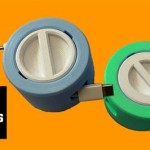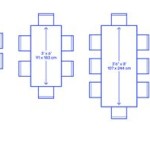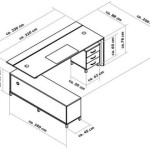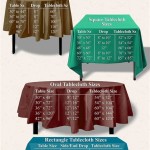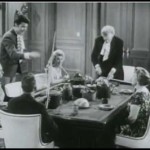Dog Kennel End Table DIY: Combining Function and Style
Integrating pet necessities seamlessly into home decor often presents a challenge. The traditional dog crate, while functional, can be an eyesore, clashing with carefully curated interior designs. A solution that addresses both the practical need for a dog kennel and the aesthetic desire for a cohesive living space is the DIY dog kennel end table. This project involves transforming a standard dog crate into a dual-purpose piece of furniture, serving as both a comfortable enclosure for a dog and a functional end table.
This article explores the process of creating a DIY dog kennel end table, outlining the necessary materials, tools, and steps involved. The goal is to provide a comprehensive guide that enables individuals with varying levels of DIY experience to successfully complete this project, resulting in a practical and aesthetically pleasing addition to their home.
Key Point 1: Planning and Material Selection for a Dog Kennel End Table
The initial phase of any DIY project is planning and preparation. This involves assessing the dog's size and temperament, determining the desired dimensions of the end table, and selecting appropriate materials. Careful consideration at this stage will minimize errors and ensure a successful outcome. The primary factors to consider include the safety and comfort of the dog, the structural integrity of the table, and the overall aesthetic appeal.
The first step is to accurately measure the dog. This measurement should include the dog's height when standing, length when lying down, and width when sitting comfortably. Add several inches to each dimension to ensure the dog has ample space to move around and lie down comfortably within the kennel. Failing to provide adequate space will create a stressful and uncomfortable environment for the dog, defeating the purpose of the project. The dimensions of the dog will directly influence the overall size of the end table.
Next, consider the existing decor of the room where the end table will be placed. This will influence the choice of materials and finishes. Common materials include wood, plywood, MDF (medium-density fiberboard), and metal. Wood offers a classic and durable option, while plywood and MDF are more cost-effective alternatives. If using plywood or MDF, ensure they are sealed properly to prevent moisture damage and warping. Metal can be incorporated for accents or reinforcement, particularly if the dog is prone to chewing.
The choice of wood depends on budget, aesthetic preferences, and desired durability. Pine is a readily available and affordable option, but it is relatively soft and easily scratched or dented. Hardwoods such as oak, maple, or walnut offer superior durability and a more refined appearance, but they are also more expensive. Reclaimed wood can be a sustainable and aesthetically interesting option, but it may require more preparation and cleaning. Consider also the weight of the wood to ensure the table is sturdy but not excessively heavy.
Hardware selection is equally important. Use durable hinges for the door, secure latches to prevent escapes, and levelers for the feet to ensure stability on uneven surfaces. Choose screws or nails that are appropriate for the chosen wood and will provide a strong and lasting connection. Consider using non-toxic finishes and paints to ensure the dog's safety. If using stains or paints, allow them to fully dry and ventilate the area before allowing the dog access to the kennel.
Tools needed for the project will vary depending on the complexity of the design and the chosen materials. A basic toolkit should include a saw (circular saw or hand saw), drill, screwdriver, measuring tape, level, sandpaper, and safety glasses. For more intricate designs, a router, jigsaw, or nail gun may be necessary. Ensure all tools are in good working condition and that the user is familiar with their safe operation.
Finally, create a detailed plan or sketch of the end table. This plan should include all dimensions, material quantities, and construction steps. A well-defined plan will serve as a roadmap throughout the project, minimizing errors and ensuring a smooth construction process. Consider incorporating design elements that complement the existing decor, such as decorative moldings, paint colors, or hardware finishes.
Key Point 2: Construction Process for a Dog Kennel End Table
Once the planning and material selection are complete, the construction phase begins. This involves cutting the wood to the specified dimensions, assembling the frame, installing the door and latches, and applying the desired finish. Accuracy and attention to detail are crucial during this phase to ensure a structurally sound and aesthetically pleasing end table.
Begin by cutting the wood according to the dimensions outlined in the plan. Use a saw to make precise cuts, ensuring that all edges are straight and square. Label each piece of wood to avoid confusion during assembly. If using plywood or MDF, consider having the pieces cut at a local hardware store to ensure accurate and clean cuts. This can save time and effort, particularly if specialized cutting equipment is not available.
Next, assemble the frame of the end table. This typically involves joining the sides, top, bottom, and back pieces together using screws or nails. Ensure that all joints are square and that the frame is level. Use wood glue in addition to screws or nails to create a stronger and more durable bond. Clamp the pieces together while the glue dries to ensure a tight and secure connection.
Install the door on one of the sides of the end table. Use durable hinges that are appropriate for the weight and thickness of the door. Ensure that the door swings smoothly and closes properly. Install a latch to secure the door and prevent the dog from escaping. Consider using a child-proof latch for added security. Ensure the latch is easy for humans to operate but difficult for a dog to manipulate.
Add a floor to the kennel. This can be a piece of wood or a removable tray for easy cleaning. If using a removable tray, ensure that it fits snugly within the frame and is easy to remove and replace. Consider using a waterproof or water-resistant material for the floor to protect against spills and accidents.
Once the frame is assembled and the door is installed, sand all surfaces smooth using sandpaper. This will remove any rough edges and create a smooth surface for finishing. Start with a coarse grit sandpaper and gradually move to a finer grit for a polished finish. Pay particular attention to the edges and corners to ensure they are smooth and rounded.
Apply the desired finish to the end table. This may involve staining, painting, or varnishing the wood. Choose a finish that is durable, water-resistant, and non-toxic. Follow the manufacturer's instructions for application and drying times. Apply multiple coats of finish for added protection and durability. Allow the finish to fully dry and cure before allowing the dog access to the kennel.
Consider adding decorative elements to enhance the aesthetic appeal of the end table. This may include decorative moldings, trim, or hardware. Choose elements that complement the existing decor of the room and add a personal touch to the project. Ensure that any decorative elements are securely attached and do not pose a hazard to the dog.
Key Point 3: Customization and Safety Considerations for Dog Kennel End Tables
Beyond the basic construction, the DIY dog kennel end table offers opportunities for customization and personalization. This allows the owner to tailor the project to the specific needs and preferences of their dog and their home decor. However, safety should always be the top priority, ensuring that the finished product is a comfortable and secure environment for the dog.
Customization options include adding a comfortable bed or bedding to the kennel. Choose a bed that is the appropriate size for the dog and is made from durable and washable materials. Consider the dog's preferences for bedding, such as a plush bed, a firm mattress, or a cooling mat. Regularly clean the bedding to maintain hygiene and prevent odors.
Ventilation is crucial for the dog's comfort and well-being. Ensure that the kennel has adequate ventilation by incorporating windows or ventilation holes in the sides or back of the end table. These openings should be large enough to allow for proper airflow, but small enough to prevent the dog from escaping. Cover the openings with wire mesh or decorative grilles to prevent the dog from chewing or damaging the openings.
Consider adding a shelf or drawer to the end table for storage. This can be used to store dog toys, treats, leashes, or other pet supplies. Ensure that the shelf or drawer is securely attached and that the contents are out of reach of the dog. Use child-proof locks on drawers or cabinets to prevent the dog from accessing potentially harmful items.
The top of the end table can be customized to create a functional surface for placing lamps, books, or other decorative items. Consider adding a lip or edge to the top to prevent items from sliding off. Use a durable and water-resistant finish to protect the top from spills and scratches.
Safety considerations are paramount when designing and building a dog kennel end table. Ensure that all materials are non-toxic and safe for dogs. Avoid using sharp edges or corners that could potentially injure the dog. Securely attach all hardware and decorative elements to prevent them from coming loose and posing a choking hazard.
Regularly inspect the end table for any signs of damage or wear. Repair any damage promptly to prevent it from becoming a safety hazard. Ensure that the kennel remains clean and sanitary to prevent the spread of disease. Clean the kennel regularly with a pet-safe cleaner and disinfect as needed.
Introduce the dog to the kennel gradually and positively. Use treats and praise to encourage the dog to enter and explore the kennel. Never force the dog into the kennel or use it as a punishment. Create a positive association with the kennel by making it a comfortable and safe space for the dog. Supervise the dog initially to ensure they are comfortable and not showing signs of distress.
The DIY dog kennel end table is a rewarding project that combines functionality and style. By carefully planning, selecting appropriate materials, and following the construction steps outlined in this article, individuals can create a unique and personalized piece of furniture that seamlessly integrates their pet's needs into their home decor. Always prioritize safety and ensure that the finished product is a comfortable and secure environment for the dog.

Plans For Diy Dog Kennel End Table Crate Furniture

Large Wood Pet Kennel End Table Ana White

Dog Kennel End Table 13 Steps With S Instructables

Diy Plans For A Dog Crate End Table

Diy Dog Crate End Table Or Nightstand Building Plans

Dog Kennel End Table 13 Steps With S Instructables

Diy Dog Crate End Table Or Nightstand Building Plans

Turn A Plain Old Dog Crate Into Double Duty End Table

Easy Build Dog Crate Side Table The Palette Muse

Diy Dog Crate Side Table Knockoff Challenge Remodelando La Casa

